Many groundbreaking inventions across various fields have emerged throughout the history of the Year of the Dragon.
Year of the Dragon 1964: The First Desktop Computer Unveiled
The P101, the first desktop computer in history, was launched at the New York World’s Fair in the Year of the Dragon (1964).
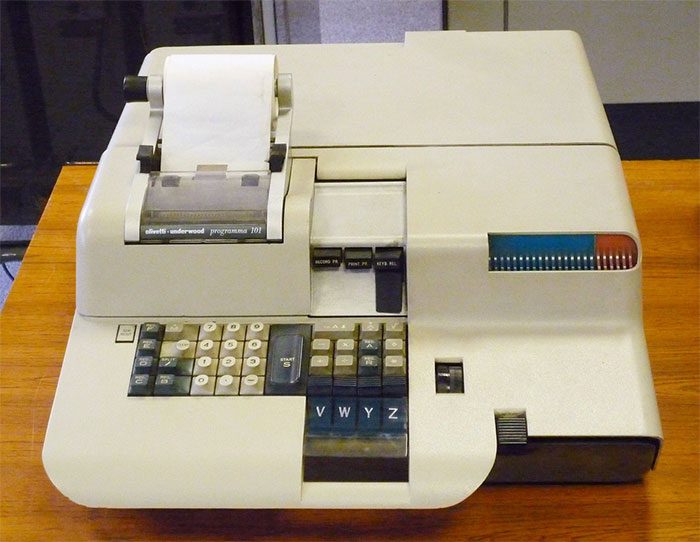
The first desktop computer.
This machine was designed by Pier Giorgio Perotto, an Italian electronics pioneer. Its dimensions were 275 x 465 x 610 mm, weighing 35.5 kg, and consuming 0.35 kW of electricity.
The hardware included discrete components such as transistors, diodes, resistors, and capacitors mounted on phenolic plastic circuit boards.
It featured a memory capacity of 240 bytes, which was quite small compared to machines of that era, but represented a significant milestone at the time.
The computer could perform addition, subtraction, multiplication, division, square roots, and absolute value calculations, delivering results accurate to 22 digits, with a maximum of 15 decimal places.
Data was recorded on plastic cards and could be printed on 9 cm paper.
Although it was the first product showcased at the fair, 40,000 units were sold shortly thereafter. Ninety percent of the market share was in the U.S., with each machine priced at $3,200.
NASA purchased this type of computer to plan and calculate the trajectories of space programs, including the Apollo 11 mission that landed humans on the Moon.
Year of the Dragon 1904: The Vacuum Tube and Diesel Submarine
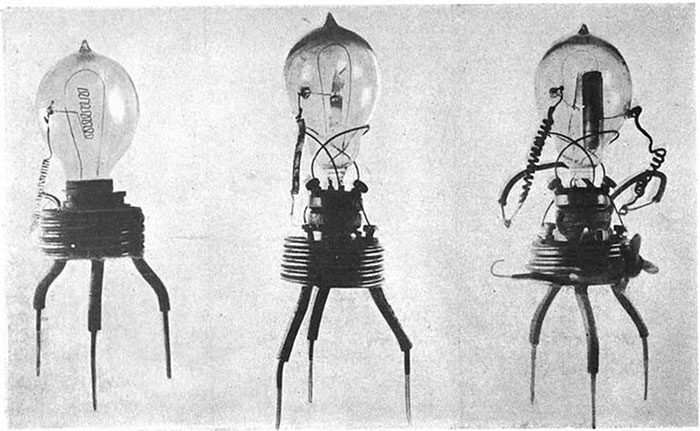
The first vacuum tubes by John A. Fleming.
In 1904, John A. Fleming from University College London invented the vacuum diode. These vacuum diodes could conduct electricity in one direction, control alternating current, or detect signals.
The invention of the vacuum tube is often regarded as the beginning of electronic devices. Fleming’s version was quite primitive, containing a heated cathode and an anode. Electrons moved in one direction through the device, from the cathode to the anode.
The device was later improved to become a key component in electronic circuits in the first half of the 20th century.
Fleming’s diode was used in radio receivers, playing a crucial role in the development of radio, television, and radar for several decades until being replaced by solid-state electronic technology.
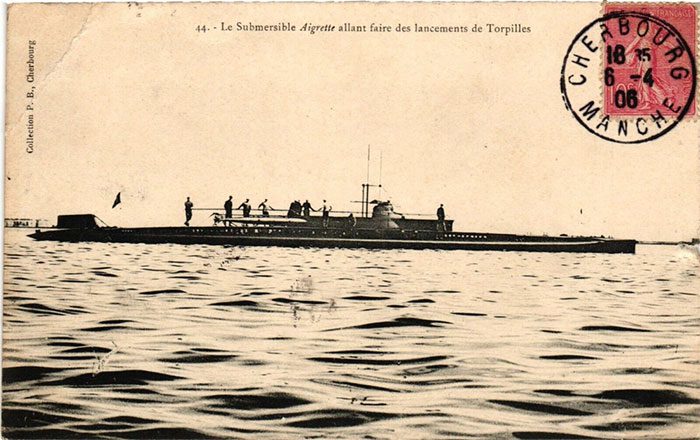
The French submarine Aigrette launched in the Year of the Dragon.
Also in 1904, the world’s first diesel submarine, the Aigrette, was officially launched. This submarine, manufactured in France, had a displacement of 181 tons when surfaced and 257 tons when submerged.
Its length was 35.9 m, width 4.04 m, and a draft of 2.63 m. The submarine had a single shaft driven by a 150-horsepower diesel engine and a 130-horsepower electric motor.
The maximum speed was 17.2 km/h on the surface and 11.5 km/h submerged.
The submarine was equipped with two Drzewiecki 450mm torpedo launchers and two 450mm torpedoes mounted in external racks.
The Aigrette was ordered on May 13, 1902, launched in February 1904, and entered service in 1908.
During World War I, Aigrette served in defensive positions in Brest and Cherbourg (France). It was decommissioned in November 1919 and sold for scrap in April 1920.
Year of the Dragon 1844: The First Morse Code
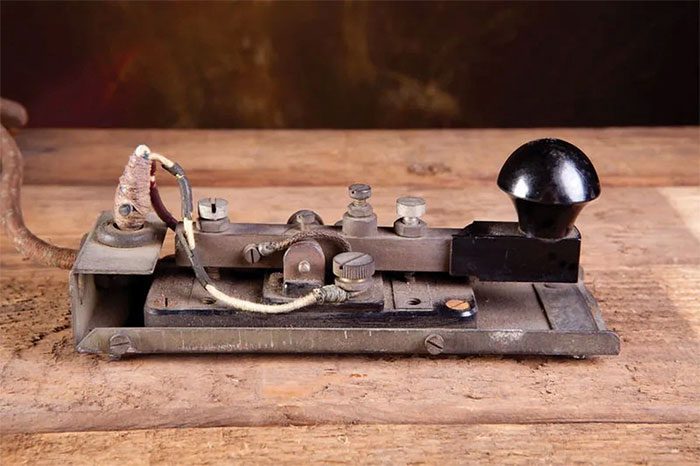
A part of the first Morse code transmission system – (Photo: BRITANNICA).
Telegraphy is characterized by sending messages over long distances using encoded signals. This method was widely used for communication in maritime and aviation sectors.
The invention of the telegraph is closely associated with the formation of Morse code. Morse code is named after inventor Samuel F.B. Morse, who encoded textual characters into dots and dashes for signaling.
On May 24, 1844, before government officials in Washington D.C. (USA), Samuel Morse demonstrated the first telegraph message, sent to his assistant Alfred Vail in Baltimore with the content “What hath God Wrought?”, a phrase from the Bible.
From this point, Morse and Vail continuously improved telegraph technology. Some of the first telegraph lines were constructed between 1845 and 1848.
By the early 1900s, many started using the popular Morse code characters “· · · – – – · · ·” to signal distress at sea. This signal corresponds to the S-O-S widely used today.
Year of the Dragon 1784: Gauß Solves a Classic Problem
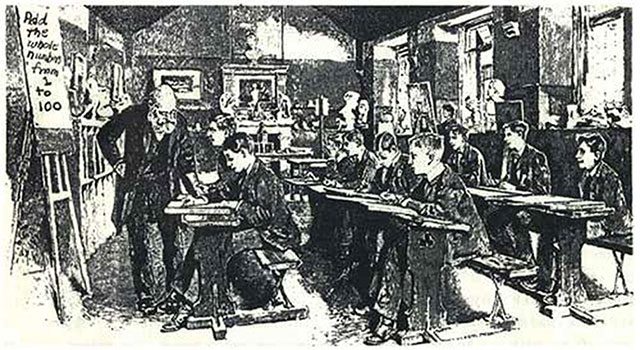
A painting recreating the classroom scene on the day Gauß discovered the famous summation method
The German mathematician Johann Carl Friedrich Gauß (1777 – 1855) is world-renowned for solving the summation of 1 + 2 + 3 + 4 + … + 100.
In 1784, when Gauß was 7 years old, his teacher assigned the students in Gauß’s class the task of calculating the sum of numbers from 1 to 100. While his classmates added the numbers sequentially, Gauß arrived at the answer in just a few seconds.
He noticed that by “pairing” the two numbers from the beginning and end of the sequence, such as 100 + 1, 99 + 2, 98 + 3, etc., the sums were all the same, equal to 101. With 100 numbers, there are 50 pairs, so multiplying 101 by 50 gives a result of 5,050.
Later, summation formulas were developed and named after him. One of the typical formulas attributed to Gauß taught in Vietnamese high schools is the sum of the series 1 + 2 + 3 + … + n = (n x (n + 1)) / 2.
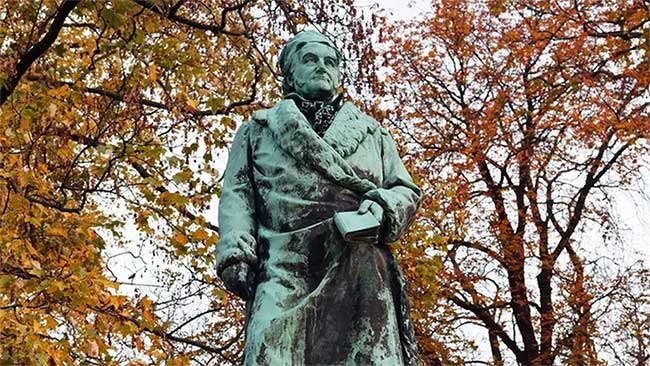
A statue commemorating the contributions of mathematician Gauß – (Photo: BRITANNICA).


















































